- Home
- Bobby Akart
New Madrid Earthquake Page 2
New Madrid Earthquake Read online
Page 2
“The centuries-long stalemate beneath the planet’s surface had a change in dynamic. One side of the plate saw an opportunity, an opening, so to speak, to exert pressure on this primeval crack. It forced its will upon its opponent, and the vertical shelves became snagged on one another. As one snag became weaker than the other, one side shifted upward just below the surface of the earth.
“The scrum continued until it held for a minute or so. Then the incredible strength of the always-moving earth pushed again. This time, the snag became an ever-widening crack below the surface, and the first earthquake rocked the region.”
Dr. Lansing stopped her casual stroll back and forth across the stage. With a pensive look on her face, she touched her fingers to her forehead and focused on several educators sitting along the front row.
“Remember, it’s 1811. Google didn’t exist back then. We have to look at the historical record of this event as told by residents in their correspondence and journalists in their newspapers. Obviously, we can only estimate how powerful this series of earthquakes was. Earth-shaking fissures opened up along the fault that were felt far and wide. Boston; Charleston, South Carolina; and Richmond, Virginia. It was felt at the White House, as we know from a letter sent to Thomas Jefferson by our fourth president, James Madison. Even Dolly Madison, his wife, shared accounts of the quake.
“During the third massive quake in February of 1812, vast swaths of land sank while other areas were lifted. Landslides occurred. New lakes, like Reelfoot in West Tennessee, were created. For a brief time, those who relied upon the Mississippi River to deliver goods to the Port of New Orleans found themselves facing the unthinkable. A fluvial tsunami forced the river to run backwards the day of the third earthquake.
“Here’s the thing. As geophysicists and those who make a living based on our field of study, we recognize a major event like the 1811–1812 New Madrid earthquakes as a mere geologic blink of the eye. Yet the quakes reshaped Earth’s surface. And it had happened before, based upon our sediment study, including major upheavals in 2350 BC, AD 30, AD 900, and AD 1450.”
Dr. Lansing paused to catch her breath. It was time to introduce her theory.
“It’s natural for those in government whom I have to answer to, or even representatives of the insurance industry, to ask—when will the next big one strike the NMSZ? I believe I’ve identified a mathematical pattern called the Devil’s Staircase.”
A murmur went through the crowd as she introduced her designation for her findings. Dr. Lansing wasn’t sure if the audience thought she was serious or leading them into a joke of some kind. She got right to the point.
“In conjunction with quake activity, I have been able to identify a mathematical pattern where clusters of large shallow earthquake events were separated by long, somewhat irregular period of seismic inactivity. Heretofore, geophysicists focused their study on the classical seismic modeling that suggested quake activity would occur quasi-periodically based on cycles of buildup followed by the release of tectonic stress.
“In regions like the Ring of Fire, for example, large earthquake sequences, those with a magnitude six or greater, are characterized by a clustering of quake activity in bursts. This is a near-certain predictor of a much greater earthquake event to follow.
“In my study of the NMSZ, the irregular gap between event bursts shows how difficult it is to predict the next major quake event. The Devil’s Staircase pattern, as I call it, can be applied to recent large earthquake events in Australia, the plate boundary off the coast of western Algeria, and more recently, at the Dead Sea Transform fault west of the Golan Heights that many labeled as biblical in nature.
“The fact is that these quake events show a pattern of stress transfer between fault segments near identical to the New Madrid fault. What I am suggesting is this. In the United States, most of the public awareness of the devastating impacts of earthquakes is focused on the faults running along our West Coast. Those faults, frankly, are far more predictable than the NMSZ. As a result, warnings can be issued with relative accuracy and in a somewhat timely manner.
“In the case of a fault line like New Madrid, we have what’s commonly referred to as a high-impact, low-probability event. An analysis of the Devil’s Staircase pattern, which I continue to expand upon, indicates a massive New Madrid earthquake is not as low probability as most contend. In fact, it is a relative certainty based upon the patterns, and most likely will occur in our lifetimes.”
Part I
Living at the Edge
We live our lives. Work. Love. Play. You never know the day before a catastrophe strikes that it was, in fact, the day before. If you did, you’d prepare your mind, alter your way of life, and even get right with your maker. However, we don’t do that. We live on the edge of an unforeseen, unpredictable catastrophe that could be the end of the world as we know it, blissfully unaware of the consequences of our inaction.
And then, one day, the universe says let’s shake things up a bit.
Chapter One
Monday, December 17
St. Louis, Missouri
Jack Atwood had led a charmed life. He was a small-town boy, growing up near Dyersburg, Tennessee, just eighty miles north of Memphis and a dozen miles east of the Mighty Mississippi River. He’d had his share of good luck growing up. He’d been labeled reckless by his parents and a miscreant by his schoolteachers. Then, suddenly, all that changed.
They say cheating death can have a profound effect on a man’s soul. Well, it certainly changed Jack. He was a senior in high school when his parents gave him the green light to embark on his first spring break trip with his friends. Like so many his age, they loaded up their cars, stopped by the Short Stop on the way out of town to lie their way towards the purchase of several cases of Pabst Blue Ribbon, and drove nonstop to Fort Liquordale—Fort Lauderdale, for those who’ve never experienced spring break in the Florida coastal city.
His best friend’s car was far too powerful for him, or anyone else for that matter. The fire-engine red Chevy Camaro boasted five hundred forty horsepower, way too much power for a teenager.
“This thing will run right out from under ya,” his best friend proudly claimed when he first took Jack for a spin. And spin, they did.
Their spring break trip to Fort Liquordale was filled with wine, women, and song. The party never ended until the kids passed out or got arrested. The next day, they sought out the hair of the dog and started all over again.
On the third day of their weeklong drunkfest, Jack’s life changed. After about a fifth of Jim Beam being consumed between the two of them, they decided to roar down A1A along the beach, letting the horses run, as Jack’s buddy said. The hundred-mile-an-hour joyride didn’t go unnoticed by two motorcycle officers, who’d been writing a ticket to another spring breaker for public nudity.
They immediately gave chase, and the Camaro responded. Weaving in and out of traffic, they tried to evade their pursuers and were easily pulling away. That was when the boys realized you can’t outrun a radio, as they say.
A roadblock appeared ahead, thwarting their escape and access to the causeway. “I’ve got this, bro!” his friend exclaimed as he gripped the wheel and slammed on the brakes. The rear end of the Camaro slid sideways as he cut the wheel, an expert maneuver he couldn’t reproduce if he tried to replicate it a thousand times while sober. He punched the gas and roared down a side street toward the intracoastal waterway.
Until he ran out of road.
Jack gripped the dashboard and closed his eyes as he braced for impact with the guardrail. His mind raced as he hoped for the best result— the muscle car floating on top of the water long enough for them to swim to safety or be rescued. His mind drifted away, recalling the common myth among teenagers to allow your body to go limp during a wreck to ensure your survival.
The next few seconds could only be described as surreal. It would be many years before Jack repeated his vision to anyone. Just above the hood, floating peacefully throughout the ordea
l, Jack saw what he’d inwardly refer to as butterfly people. They weren’t butterflies per se, nor would he recall them as angels as might be depicted on television or in books. They were an indescribable presence that provided him a sense of comfort. Defying any scientific explanation, he focused on the two who stayed with the car as it whipped to the left and to the left again. Mentally, he felt protected. His body, however, suffered somewhat.
The tires screeched, and he was thrown against the passenger door, cracking open his head against the glass. The centrifugal force exerted so much pressure on him that his body was forced against the side of the Camaro in an effort to throw the locked door open.
Then he was tossed back toward the center console with such a kick that his eyes were forced open just as his head crashed into the windshield. Seconds later, the car was surrounded by Fort Lauderdale’s finest with their weapons drawn. And the butterfly people were gone.
Jack’s buddy had accomplished the impossible. He’d managed to control the Camaro through a hairpin turn under the bridge. Perhaps with a little help, Jack later surmised.
Initially, he didn’t look at the incident as if his life had been saved. In his mind, he’d almost been killed and vowed to never put himself in that position again. As he grew older and replayed the event in his mind, he became convinced the butterfly people played a role in his safety.
The near-death experience, coupled with the presence of the butterfly people, turned his life around. The hospitalization. The arrest. The lecture from his family. All contributed to a real game-changer in Jack Atwood’s life, one he’d never take for granted.
He stopped and gazed upward, taking in the six-hundred-thirty-foot-high Gateway Arch. The structure’s stainless-steel surface reflected the last vestiges of daylight as the sun set over the St. Louis skyline.
“I can’t believe we’ve never done this.” Tony Chandler, his brother-in-law and junior partner in his financial planning practice, interrupted Jack’s thoughts. “Naturally, I’d rather be throwing down some oysters and chasin’ them with the coldest beer Anheuser-Busch has to offer.”
Jack shook his head. He always had his hands full when he and Tony traveled alone to conduct financial planning seminars. Despite the fact he was married to Jack’s wife’s much younger sister, who happened to be seven months pregnant together with being saddled with the challenges of raising a three-year-old son, Tony couldn’t seem to grasp the concept of adulthood and responsibility.
After their second group of seminars in Chicago a year ago, when Jack busted his brother-in-law slipping his wedding band into his pocket while out drinking one night, he curtailed their social activities the best he could. He’d taken to visiting points of interest while they were away from home, like the Gateway Arch.
“Yeah, let’s do this,” said Jack, although he’d rather be settled in their corporate apartment in downtown St. Louis. After Beth and Tony had their first child, he’d promised his wife to take his brother-in-law under his wing to help him mature. On a business level, Tony was perfect for the firm. On a personal level, he was a handful.
The two men exited their car and were immediately hit with a blast of cold, damp wind. The temperatures had suddenly fallen, and a cold mist had overtaken the city as the afternoon wore on. Jack had watched the weather system that crossed the middle part of the U.S. He hoped the snow would hold off so he wouldn’t have to cancel the seminar. This was the last of five he’d been conducting in the cities where his offices were located up and down the Mississippi River.
St. Louis was one of his best producing offices, as it drew prospects from Illinois, Iowa, Kentucky, and Missouri. The cost and logistics of planning this seminar, especially prior to Christmas, were daunting. It was also necessary, as his prospective clients had just a couple of weeks to undertake last minute tax planning before year end.
The guys entered the attraction through the west entrance, and Jack ponied up the $26 fee to take a tour, including a ride to the top of the Gateway Arch. They boarded the tram that would take them upward along the famous monument along with three other passengers. At six feet four, Jack was slightly claustrophobic during the small tram ride. The ride was only four minutes to the apex, where the observation deck, a gift shop, and a museum were located.
For his part, Tony was enthusiastic. Or, perhaps, Jack thought, it was the attractive young woman who acted as their tour guide. Within seconds of their ascent to the top and the observation deck, Tony had abandoned Jack’s side and snuggled up to the tour guide to become her number one sightseer.
Once they exited, the group eagerly followed the young woman, who pointed out the sights as she explained the history of the Arch. Jack took extra effort to locate One Metropolitan Square, where his offices were located and the location of their four seminars that week. From there, he got his bearings to view the St. Louis area and took in the gorgeous sunset.
The tour guide began to take questions, when Jack’s cell phone vibrated in his pocket. A smile broke out across his face, and his heart leapt. After ten years of marriage, the mere sight of his wife’s picture and name on his phone screen still gave him butterflies in his stomach.
Chapter Two
Monday, December 17
Gateway Arch
St. Louis, Missouri
“I miss my handsome husband,” Jill Atwood said sexily into the phone before Jack could say hello. “And, lest I forget, suave and debonair, too.”
Jack laughed as he stopped following the tour group. He turned away to whisper to his wife, “Well, maybe I should’ve stayed home. ’Tis the season to get lucky, you know.”
Jill chuckled. “You got lucky last week, mister.”
“That was my birthday,” he shot back. “I mean, that’s a given, right?”
“Yeah, and Christmas is coming. That’ll take care of your forty-year-old man-child needs for a while.”
“Until New Year’s, anyway,” he replied with a laugh.
“Good grief. You’ve been hanging around Tony too much.” Jill paused as she held the phone away from her mouth to speak with their daughter. When she returned to the call, she asked, “I don’t hear any music in the background. Are the bars and strip clubs closed for the holidays?”
“Very funny,” replied Jack, who stepped a couple of paces back toward the tour group. While the other two attendees wandered into the gift shop, Tony had the young guide cornered as he poured on the charm. “No, I convinced our boy to see the Arch with me. He seems to be getting into it.” Jack cringed and rolled his eyes as the words came out of his mouth.
“Good. I’m glad you guys aren’t headed out for the night. You know he changes when he has a few drinks.”
Jack, who helped out on his parents’ farm as a boy, responded with the perfect analogy. “Like the difference between a horse grazing and a wild mustang. You know, I can’t keep tabs on Tony twenty-four seven. As it is, I’ve done things like the corporate apartment as a deterrent to him slipping out of a hotel room at night.”
“Or slipping something into the room, right?”
Jack sighed. “Yeah, that too.”
Jack had his doubts about Tony’s fidelity. His keen sense of observation picked up on his brother-in-law’s attempts to pick up women. He’d seen him chat up attractive females on numerous occasions, but he’d never actually seen him cross the line. After a while, he found it counterproductive to report Tony’s actions back to Jill. It would simply add fuel to a fire that was smoldering within her.
She had a difficult challenge of her own to avoid relaying reports of Tony’s disrespectful indiscretions to her sister. Beth was juggling a three-year-old boy with autism along with a near-seven-month pregnancy.
“You’ve been a great influence on him, honey,” said Jill. “Beth knows and appreciates the sacrifices you’ve made, both financially and timewise.”
“I’d do anything for you,” Jack interjected.
“It’s more than for me. It’s for Beth, too. Let’s fa
ce it. She wants what I have. I’m not saying she’s jealous in a pea-green-with-envy sort of way. She’d settle for a husband who simply paid a little attention to her and treated her with respect. Guys like you who worship and adore their wives are few and far between.”
“Flattery will get you everywhere, ma’am.”
Jill continued. “Listen, she’s young, too. They should’ve never gotten married straight out of college. She visualized this utopian dream of a knight in shining armor doting over her while she had babies. Instead, she got a guy who looks like a prince, but whose eyes, and maybe hands, continue to wander. Sometimes our conversations are consumed about the relationship you and I have rather than anything positive about her own. For Pete’s sake, she even wishes she had cutesy names like ours.”
“Jack and Jill?” he asked.
“Duh. Cute, right?”
Jack couldn’t disagree and then said, “Don’t get me wrong. Tony certainly has a problem remembering he has a wife and kid at home. I can’t babysit him night and day. From a business perspective, he may have been one of the best hires I’ve ever made. It enabled me to take my practice in a whole different direction that’s paid off for all of us.”
Like Jack, Jill was anxious to move their conversation away from the Chandlers’ marriage, a topic discussed far more often than they wished to. “So are you excited for this week?”
“Yeah,” he quickly replied. “Actually, other than being away from home this close to Christmas, I think it’s gonna be a good week for us. Today, we coordinated with the catering staff at the Top of the Met to get ready.”
“I’m so glad you were able to get it reopened,” Jill added.
“Kemoll’s left a big hole when they pulled their restaurant off the fortieth floor and shut down the banquet facilities on forty-two. It didn’t seem right to fill the space with only a fitness center. My client, the retired Applebee’s franchisee, couldn’t wait to fill the void.”

 Geostorm The Collapse: A Post Apocalyptic EMP Survival Thriller (The Geostorm Series Book 3)
Geostorm The Collapse: A Post Apocalyptic EMP Survival Thriller (The Geostorm Series Book 3)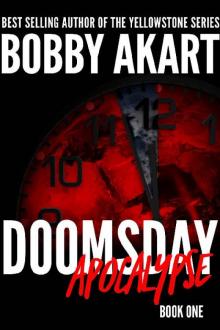 Doomsday Apocalypse
Doomsday Apocalypse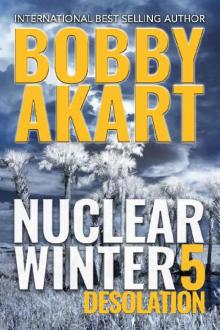 Nuclear Winter Desolation: Post Apocalyptic Survival Thriller (Nuclear Winter Series Book 5)
Nuclear Winter Desolation: Post Apocalyptic Survival Thriller (Nuclear Winter Series Book 5)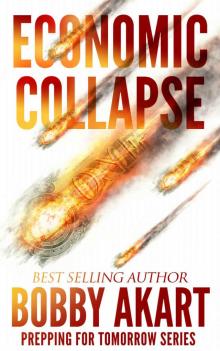 Economic Collapse (Prepping for Tomorrow Book 2)
Economic Collapse (Prepping for Tomorrow Book 2) Nuclear Winter Armageddon
Nuclear Winter Armageddon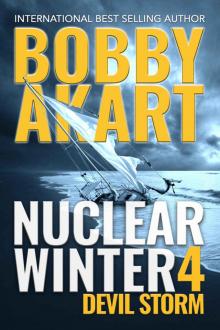 Nuclear Winter Devil Storm
Nuclear Winter Devil Storm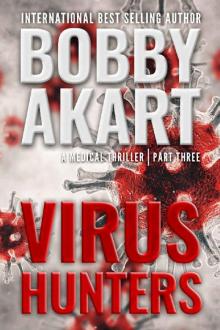 Virus Hunters 3: A Medical Thriller
Virus Hunters 3: A Medical Thriller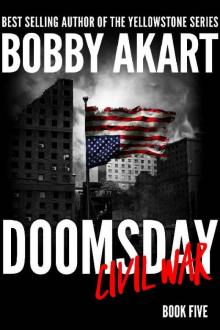 Doomsday Civil War: A Post-Apocalyptic Survival Thriller (The Doomsday Series Book 5)
Doomsday Civil War: A Post-Apocalyptic Survival Thriller (The Doomsday Series Book 5)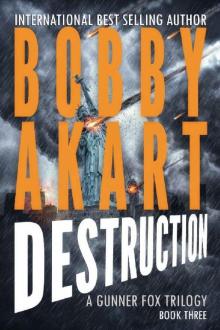 Asteroid Destruction
Asteroid Destruction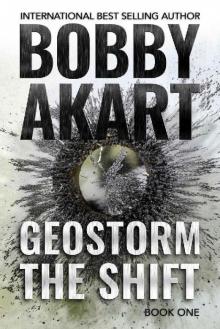 Geostorm the Shift
Geostorm the Shift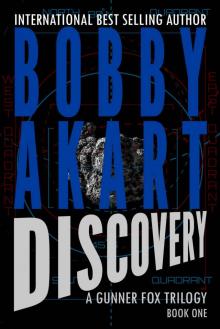 Asteroid Discovery
Asteroid Discovery Virus Hunters 2: A Medical Thriller
Virus Hunters 2: A Medical Thriller Geostorm The Shift: A Post-Apocalyptic EMP Survival Thriller (The Geostorm Series Book 1)
Geostorm The Shift: A Post-Apocalyptic EMP Survival Thriller (The Geostorm Series Book 1) Asteroid Diversion
Asteroid Diversion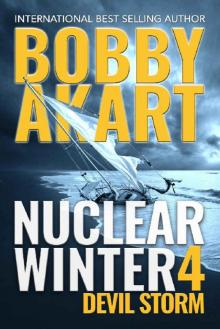 Nuclear Winter Devil Storm: Post Apocalyptic Survival Thriller (Nuclear Winter Series Book 4)
Nuclear Winter Devil Storm: Post Apocalyptic Survival Thriller (Nuclear Winter Series Book 4)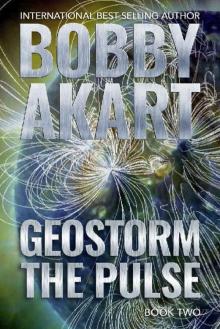 Geostorm The Pulse: A Post Apocalyptic EMP Survival Thriller (The Geostorm Series Book 2)
Geostorm The Pulse: A Post Apocalyptic EMP Survival Thriller (The Geostorm Series Book 2) Yellowstone: Survival: A Post-Apocalyptic Survival Thriller (The Yellowstone Series Book 4)
Yellowstone: Survival: A Post-Apocalyptic Survival Thriller (The Yellowstone Series Book 4)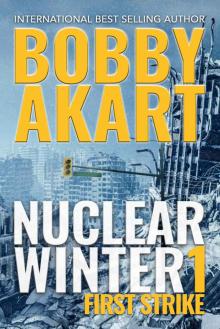 Nuclear Winter First Strike: Post-Apocalyptic Survival Thriller
Nuclear Winter First Strike: Post-Apocalyptic Survival Thriller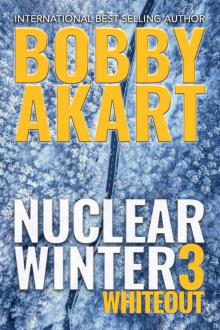 Nuclear Winter Whiteout
Nuclear Winter Whiteout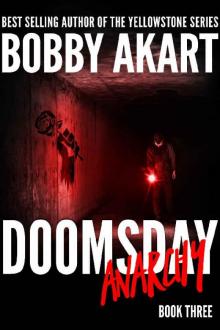 Doomsday Anarchy
Doomsday Anarchy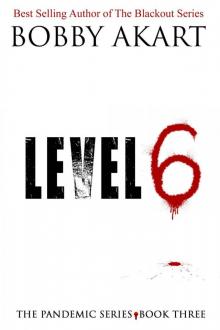 Pandemic: Level 6: A Post Apocalyptic Medical Thriller Fiction Series (The Pandemic Series Book 3)
Pandemic: Level 6: A Post Apocalyptic Medical Thriller Fiction Series (The Pandemic Series Book 3) Martial Law
Martial Law Odessa Reborn: A Terrorism Thriller (Gunner Fox Book 4)
Odessa Reborn: A Terrorism Thriller (Gunner Fox Book 4)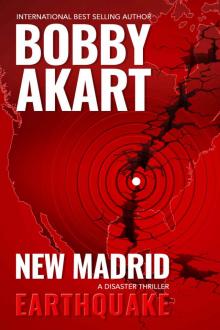 New Madrid Earthquake
New Madrid Earthquake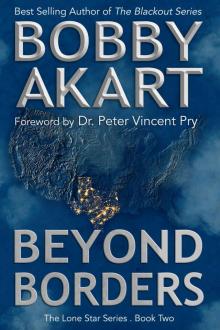 Beyond Borders: Post Apocalyptic EMP Survival Fiction (The Lone Star Series Book 2)
Beyond Borders: Post Apocalyptic EMP Survival Fiction (The Lone Star Series Book 2)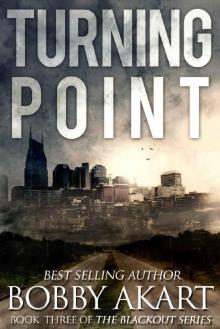 The Blackout Series (Book 3): Turning Point
The Blackout Series (Book 3): Turning Point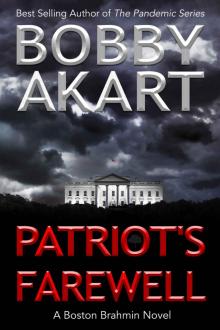 Patriot's Farewell: A Political Thriller Fiction Series (Boston Brahmin Political Thrillers Book 7)
Patriot's Farewell: A Political Thriller Fiction Series (Boston Brahmin Political Thrillers Book 7)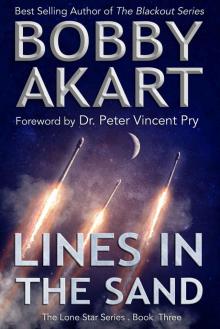 Lines in the Sand_Post Apocalyptic EMP Survival Fiction
Lines in the Sand_Post Apocalyptic EMP Survival Fiction The Mechanics: A Post-Apocalyptic Fiction Series
The Mechanics: A Post-Apocalyptic Fiction Series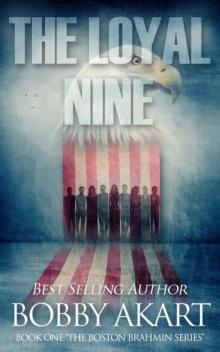 The Loyal Nine
The Loyal Nine Axis of Evil
Axis of Evil Axis of Evil: Post Apocalyptic EMP Survival Fiction (The Lone Star Series Book 1)
Axis of Evil: Post Apocalyptic EMP Survival Fiction (The Lone Star Series Book 1)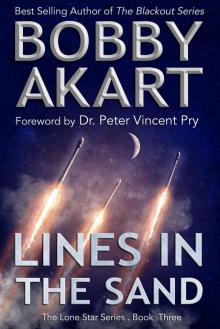 Lines in the Sand: Post Apocalyptic EMP Survival Fiction (The Lone Star Series Book 3)
Lines in the Sand: Post Apocalyptic EMP Survival Fiction (The Lone Star Series Book 3) Odessa Strikes
Odessa Strikes The Blackout Series (Book 4): Shiloh Ranch
The Blackout Series (Book 4): Shiloh Ranch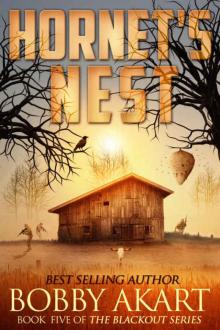 Hornet's Nest: A Post Apocalyptic EMP Survival Fiction Series (The Blackout Series Book 5)
Hornet's Nest: A Post Apocalyptic EMP Survival Fiction Series (The Blackout Series Book 5) Yellowstone: Fallout: A Post-Apocalyptic Survival Thriller (The Yellowstone Series Book 3)
Yellowstone: Fallout: A Post-Apocalyptic Survival Thriller (The Yellowstone Series Book 3)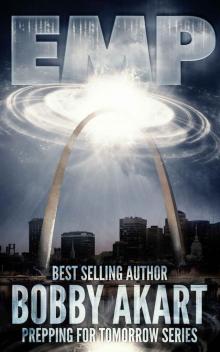 Electromagnetic Pulse
Electromagnetic Pulse Texas Strong: Post Apocalyptic EMP Survival Fiction (The Lone Star Series Book 4)
Texas Strong: Post Apocalyptic EMP Survival Fiction (The Lone Star Series Book 4)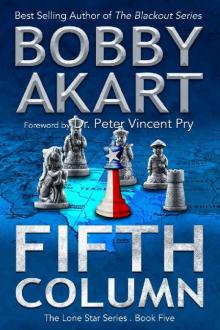 Fifth Column_Post Apocalyptic EMP Survival Fiction
Fifth Column_Post Apocalyptic EMP Survival Fiction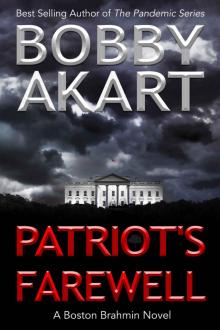 Patriot's Farewell
Patriot's Farewell Texas Strong_Post Apocalyptic EMP Survival Fiction
Texas Strong_Post Apocalyptic EMP Survival Fiction Pandemic: The Innocents: A Post-Apocalyptic Medical Thriller Fiction Series (The Pandemic Series Book 2)
Pandemic: The Innocents: A Post-Apocalyptic Medical Thriller Fiction Series (The Pandemic Series Book 2) Shiloh Ranch: A Post Apocalyptic EMP Survival Fiction Series (The Blackout Series Book 4)
Shiloh Ranch: A Post Apocalyptic EMP Survival Fiction Series (The Blackout Series Book 4) Cyber Attack
Cyber Attack Beyond Borders
Beyond Borders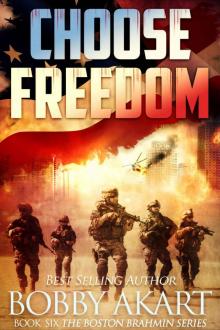 Choose Freedom: A Post-Apocalyptic Fiction Series (The Boston Brahmin Book 6)
Choose Freedom: A Post-Apocalyptic Fiction Series (The Boston Brahmin Book 6)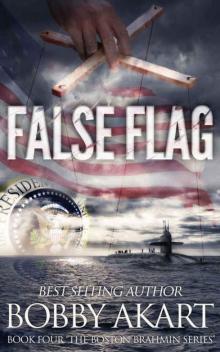 False Flag
False Flag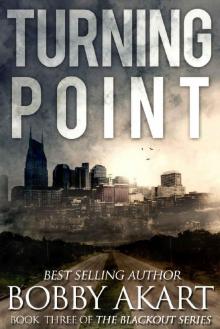 Turning Point: A Post Apocalyptic EMP Survival Fiction Series (The Blackout Series Book 3)
Turning Point: A Post Apocalyptic EMP Survival Fiction Series (The Blackout Series Book 3)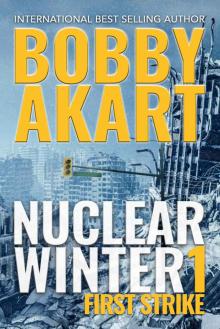 Nuclear Winter First Strike
Nuclear Winter First Strike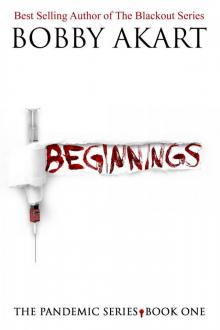 Pandemic: Beginnings: A Post-Apocalyptic Medical Thriller Fiction Series (The Pandemic Series Book 1)
Pandemic: Beginnings: A Post-Apocalyptic Medical Thriller Fiction Series (The Pandemic Series Book 1) Devil's Homecoming: A Post Apocalyptic EMP Survival Fiction Series (The Blackout Series Book 6)
Devil's Homecoming: A Post Apocalyptic EMP Survival Fiction Series (The Blackout Series Book 6) The Blackout Series (Book 6): Devil's Homecoming
The Blackout Series (Book 6): Devil's Homecoming Yellowstone: Inferno: A Post-Apocalyptic Survival Thriller (The Yellowstone Series Book 2)
Yellowstone: Inferno: A Post-Apocalyptic Survival Thriller (The Yellowstone Series Book 2)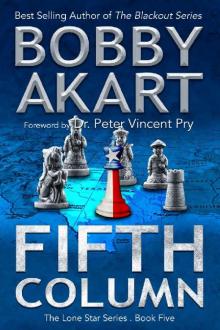 Fifth Column: Post Apocalyptic EMP Survival Fiction (The Lone Star Series Book 5)
Fifth Column: Post Apocalyptic EMP Survival Fiction (The Lone Star Series Book 5) Yellowstone: Hellfire: A Post-Apocalyptic Survival Thriller (The Yellowstone Series Book 1)
Yellowstone: Hellfire: A Post-Apocalyptic Survival Thriller (The Yellowstone Series Book 1) The Blackout Series (Book 2): Zero Hour
The Blackout Series (Book 2): Zero Hour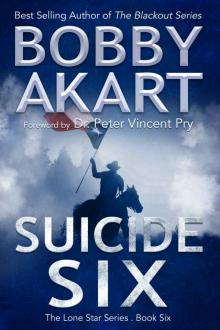 Suicide Six: Post Apocalyptic EMP Survival Fiction (The Lone Star Series Book 6)
Suicide Six: Post Apocalyptic EMP Survival Fiction (The Lone Star Series Book 6)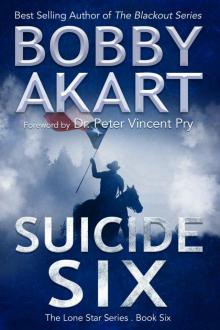 Suicide Six_Post Apocalyptic EMP Survival Fiction
Suicide Six_Post Apocalyptic EMP Survival Fiction Zero Hour: A Post-Apocalyptic EMP Survival Fiction Series (The Blackout Series Book 2)
Zero Hour: A Post-Apocalyptic EMP Survival Fiction Series (The Blackout Series Book 2)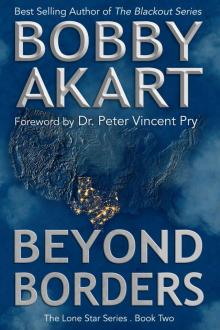 Beyond Borders_Post Apocalyptic EMP Survival Fiction
Beyond Borders_Post Apocalyptic EMP Survival Fiction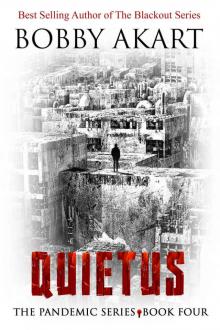 Pandemic: Quietus: A Post-Apocalyptic Dystopian Fiction Series (The Pandemic Series Book 4)
Pandemic: Quietus: A Post-Apocalyptic Dystopian Fiction Series (The Pandemic Series Book 4) 36 Hours: A Post-Apocalyptic EMP Survival Fiction Series
36 Hours: A Post-Apocalyptic EMP Survival Fiction Series Cyber Warfare
Cyber Warfare